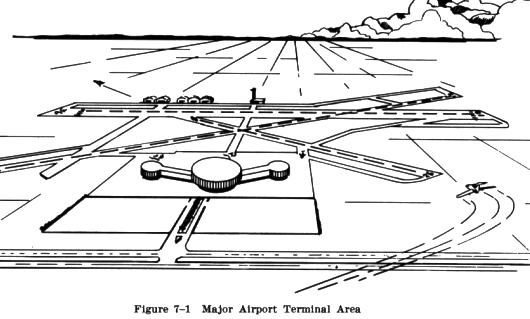
When an automobile is being driven on congested city streets, it can be brought to a stop so as to give way to conflicting traffic. An airplane, however, can only be slowed down. Even then, it may be traveling 60 to 180 miles per hour. Consequently, specific traffic patterns and traffic control procedures have been established at designated airports. The traffic patterns provide specific routes for takeoffs, departures, arrivals, and landings. The exact nature of each airport traffic pattern is dependent on the runway in use, wind conditions, obstructions, and other factors.
Control towers and radar facilities provide a means of adjusting the flow of arriving and departing aircraft, and render assistance to the pilot in busy terminal areas. Airport lighting and runway marking systems are used frequently to alert the pilot to abnormal conditions and hazards, so arrivals and departures can be made safely.

Airports vary in complexity from small grass or sod strips to major terminals having a complex of many paved runways and taxiways (Fig. 7-1). Regardless of the type of airport, the pilot must know and abide by the rules and general operating procedures applicable to the airport being used. These rules and procedures are based not only on logic or common sense, but also on courtesy, and their objective is to keep air traffic moving with maximum safety and efficiency. The use of any traffic pattern, service, or procedure does not, however, alter the responsibility of each pilot to see and avoid other aircraft.